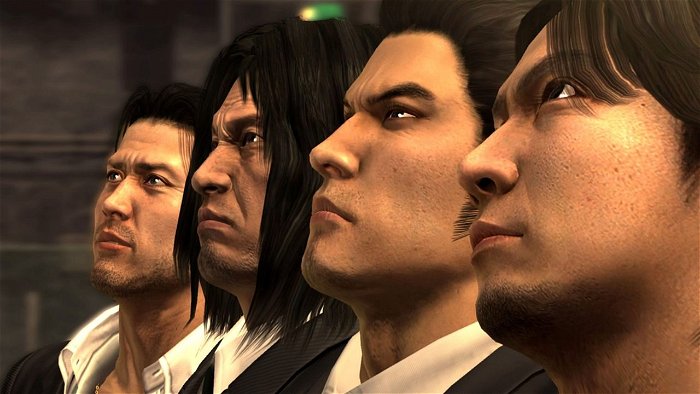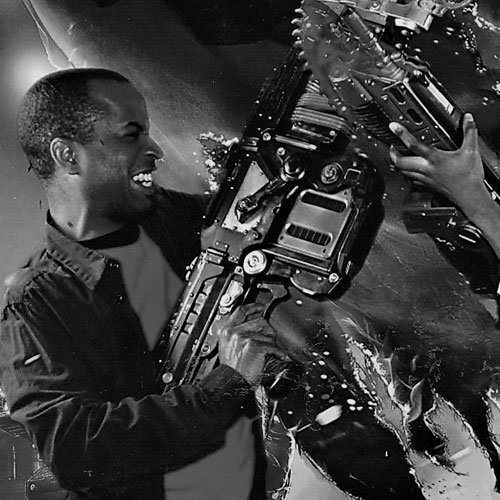With the Yakuza Remastered Collection making its long-awaited debut in Xbox Game Pass this week, and Yakuza 6: The Song of Life launching into the service late next month, the now 15-year-old Yakuza franchise is one step closer to achieving a historic milestone in the West; very soon, all eight of the mainline Yakuza titles (previously exclusive only on PlayStation consoles as a complete series) will be available to play on the Xbox platform. As a fan of the series since the 2005 release of the original game on PlayStation 2 in the west, but also harbouring a much stronger affinity with the Xbox ecosystem, I’ve personally been longing to see such an outcome since the game’s famed developer, Ryu Ga Gotoku Studio released the cross-platform Sci-Fi title Binary Domain on Xbox 360 way back in 2012. Sadly, Binary Domain turned out to be a total flop, and studio head Toshihiro Nagoshi apparently took it rather personally, as it would be eight years before another Ryu Ga Gotoku-developed game would appear on an Xbox console That honor of course belongs to the sublime franchise prequel known as Yakuza 0, which arrived on Xbox One and Xbox Game Pass in early 2020, almost a full year after it launched on Windows PC (another Microsoft platform, how ironic).

It’s puzzling why it has taken so long for the Yakuza franchise to come to Xbox, though according to Nagoshi himself, it had far more to do with where Microsoft and Xbox’s collective head was at back in the early 2000s as opposed to any exclusivity arrangements that may have existed on the PlayStation’s side, as he candidly shared in a 2018 interview with Edge Magazine (via ResetEra): “I’ve never said this before, but while we released this game with Sony, I’d done presentations about it to Microsoft and Nintendo. Back then they said “No we don’t want it.” Now they say, “We want it! They didn’t understand the reason why I created it.” Thankfully, much smarter people (Microsoft VP of Gaming and Xbox head Phil Spencer among them) are calling the shots at Xbox now, and thanks in large part to an aggressive push of more recent installments to the franchise on both Xbox Game Pass and the Xbox platform overall, the Yakuza series has blown up – fans and newcomers alike seemingly can’t get enough of it.
Well, if there was ever a release that could test the limits of all that pent-up demand on Microsoft’s platform, it’s The Yakuza Remastered Collection. This anthology packages together the franchise’s three mainline PS3-era installments, Yakuza 3, Yakuza 4 and Yakuza 5, and follows the continued adventures of “self-retired” gangster Kiryu Kazama, whose unflinching code of honor perpetually draws him back into the Japanese criminal underworld that forged him. Referred to honorarily as “The Fourth Chariman” by those who respect him and known as the legendary “Dragon of Dojima” by those who fear him, Kiryu is principled to a fault and fights unrelentingly to protect the ones he loves, including his adopted daughter Haruka Sawamura, a young girl entrusted to his care several years ago. More often than not, that fight involves using one’s fists, and as his fearsome namesake implies, Kiryu possesses mad skills when it comes to smashing in faces.

This time however, Kiryu won’t be entirely going it alone. Yakuza 4 was the first game in the franchise to introduce three new protagonists in addition to Kiryu, loan shark and Taekwondo(-ish) martial artist Shun Akiyama, former Yakuza enforcer Taiga Saejima, and “bent” cop Masayoshi Tanimura. The game’s gritty storyline is divided equally between the four characters, with Kiryu bringing up the rear. Yakuza 5 goes one step further and features five playable characters, with Shun, Taiga and naturally Kiryu returning, as well as two other characters that I’ll avoid naming for the sake of avoiding spoilers. As with all the mainline Yakuza games (aside from the latest title, Yakuza: Like a Dragon), the main setting for all three titles is the fictional red light district of Kamurocho (based on the real-life district of Kabukicho in Shinjuku, Tokyo), but each game typically features other popular Japanese locales as secondary areas. About half of Yakuza 3 takes place in the Japanese islands of Okinawa, Yakuza 4 expands its Kamurocho map to include connecting rooftops as well as underground shopping and garage areas, and Yakuza 5 sees players moving back and forth between locations in Osaka, Fukuoka, Sapporo and Nagoya in addition to Tokyo. Regardless of which title you are playing, expect a huge, overarching drama that usually involves an astronomically large sum of missing money, complex political intrigue, Yakuza internal power struggles filled with twists, turns and betrayals, and tear-jerking melodrama aplenty. And most of all, expect Kiryu and his motley crew of fellow anti-heroes to punch, kick, bludgeon and samurai slash their way through every obstacle they encounter. Fortunately for the player, Yakuza’s tried-and-true PS3-era combat and skill upgrade system has been kept intact. The old-school upgrade trees of Yakuza 3 through 5 might more closely resemble a MS Excel spreadsheet when compared to the flashy, mandala-inspired “Style” system of Yakuza 0 and Yakuza Kiwami, but they’re cleaner and more consistent across all three games in the collection, making it easier for players to transition smoothly between them.
So let’s get down to it. What has been improved in these remasters over the original PS3 version of these games (aside from being able to play them on a console that isn’t two generations behind)? Well, the two main differences worthy of note are the resolution and framerate. Outside of the occasional pre-rendered cutscene, all three Yakuza games display at a crisp 1080p resolution and run at a silky-smooth 60-frames-per-second. While this might not seem like that dramatic an improvement, the increased fidelity and fluidity of movement go a long way in helping these older Yakuza titles age more gracefully, particularly when compared to the newer remakes (Yakuza 0, Yakuza Kiwami, and Yakuza Kiwami 2). I do not joke. Having played all three games on my PlayStation 3 back when they were new, I expected the experience of playing these games again on my Xbox Series X to be far more awkward than it ended up turning out. In fact, I had just as much fun playing them now as I did back then, if not more (having a far superior controller to the DualShock 3 in the Xbox Series gamepad might have helped too). But the true unsung hero in this mix is actually the Xbox Series X’s blazing fast SSD, which has shortened load times to mere seconds across each game. Street fights, chase sequences, cutscenes and just about all the game’s modes of play initialize and conclude within an instant, the improved speed not only making the fun parts more enjoyable and faster to repeat, but also mitigating each game’s more archaic elements.

What do I mean by “archaic elements” you ask? Well, to be clear, these are long-standing conventions that exist across practically all the Yakuza games (regardless of how new they are, Yakuza: Like A Dragon being no exception), modern inconveniences that Yakuza fans like myself have simply learned to embrace as part of the Yakuza experience. While there are several examples that I could bring up, the most irritating convention that just about anyone will encounter when playing a Yakuza game right off the bat is the “quest hijack”, where an NPC will call the character by phone or encounter them on the street, triggering a mission or tutorial that the player has no choice but to follow through or complete, even though they may have originally been on the way to do something else. Even voluntarily striking up a conversation with a complete stranger might result in the player getting recruited to run a Hostess Club and spend the next 15 minutes learning how to manage it and recruit new girls before the game finally releases the player to freely roam the streets again. Yeah, forced gameplay is totally a thing in Yakuza games, so player beware. The good news is, while these inescapable “gameplay padding moments” are still very much present in the remasters, the speedy load times of the Xbox Series X allows the player to get in and out of them faster, making them a bit more bearable.
On the other hand, if you are actually looking for a helping of distractions and side quests to go along with the pugilistic main course, The Yakuza Remastered Collection has your back. Each game in the collection is packed with loads of side missions, items to collect, bizarre DIY weapons to craft, and a smattering of recreational activities and mini-games, be it swinging for the fences at the local batting cage, playing a round of golf, fishing, visiting the local bowling alley, playing assorted Sega arcade games at CLUB SEGA, or indulging in virtual gambling of both the Western and Eastern variety. Slots, Roulette, Card Games, Mahjong, Pachinko, even betting on oneself in illegal underground martial arts cage matches…it’s all there. That of course is in addition to the main campaigns of each title, which can take upwards of 20-40 hours just to finish.

Beyond the “archaic elements” mentioned earlier, there is only one other negative that I can level against what is in my mind a pretty solid Yakuza anthology. The first is that while any of these three titles offer up more than enough action and content to serve as great jumping off points for a newcomer to the series, in all honesty the third, fourth and fifth installments are probably the least ideal due to all the narrative baggage many of the principal characters are bringing in from the previous games in the saga, not to mention the obvious spoilers and confusion resulting from the player not knowing or fully understanding the events that have gone before. Anyone looking to get acquainted with the Yakuza franchise would be better served to start with Yakuza 0 or Yakuza Kiwami and proceed forward from there.
That said, this brings us full circle to the beginning of this review, where the strongest argument for anyone to consider picking up this collection lies: It’s available right now in Xbox Game Pass, right alongside all of the preceding games, and will soon be joined by Yakuza 6: The Song of Life on March 25th. Simply put, if you are an Xbox Game Pass member, or join the service for just $1 CAD (which will give you three months under the current promotion), you will have access to all of the mainline games in the Kiryu Kazama saga and can experience all their stories in any order that you want (and on any current Xbox/PC/XCloud-compatible Android device you want). I might like an Xbox Game Pass shill right now, but it’s hard to argue against that kind of value. Even if you choose to forgo Game Pass and purchase The Yakuza Remastered Collection outright at its MSRP of $55 CAD, that still comes up to less than $20 per title, which is an excellent price for just about any solid remaster of a triple-A game. Trust me, do yourself a favor if you haven’t already, and give these games a try.






